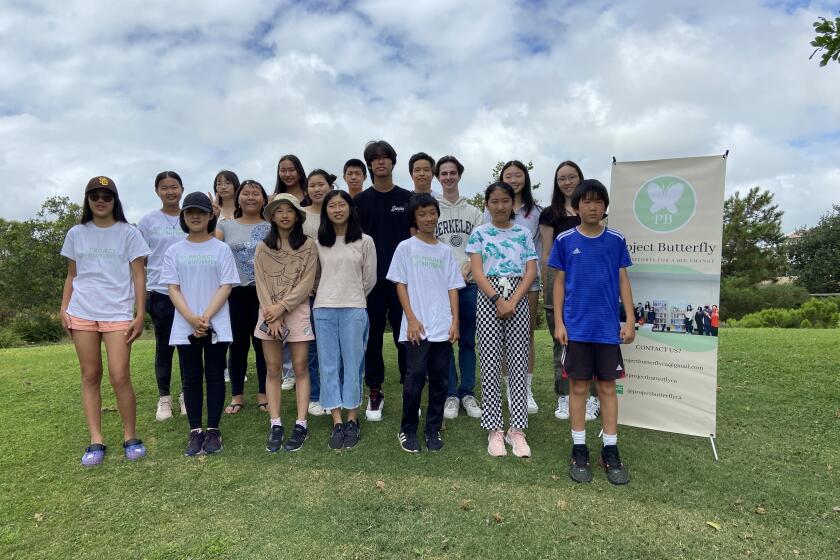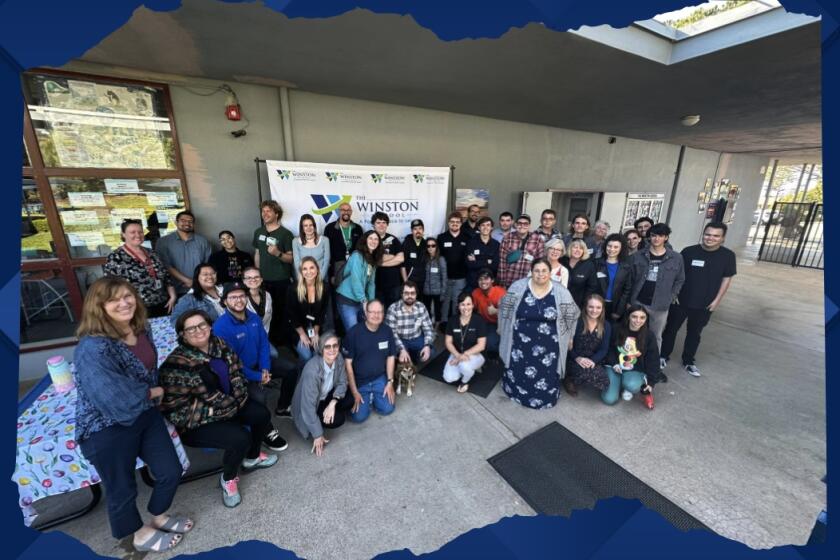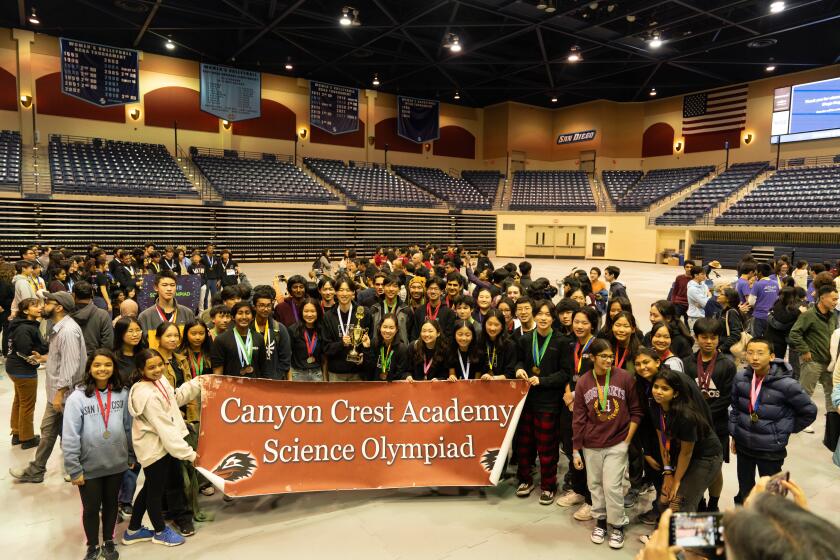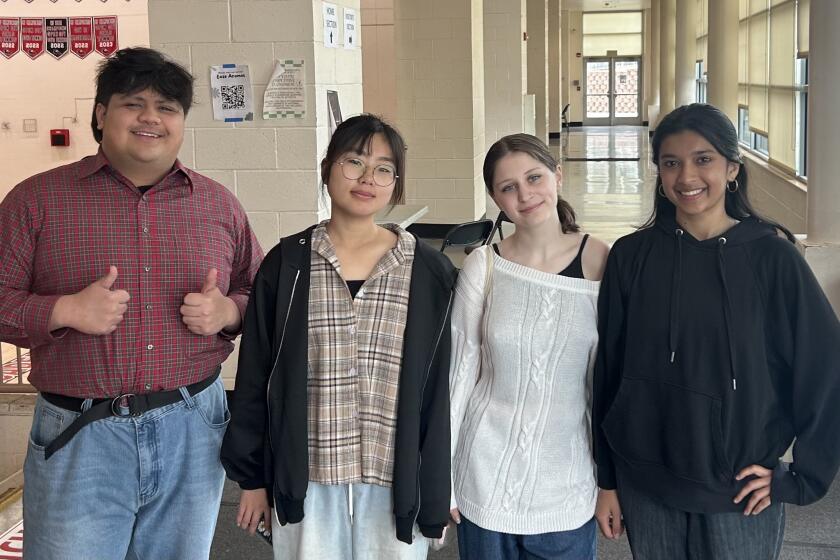Q&A: Female university pioneers past and present
Over four decades as a university administrator, Marvalene Hughes amassed one of the most storied careers in the nation, blazing trails that few women of color had been down before — or have since.
One of her most landmark positions came when she was appointed president of California State University-Stanislaus in 1994, becoming only the second African-American woman to earn the distinction in the CSU system. Hughes left Stanislaus in 2005 to lead
Ellen Junn, CSU-Stanislaus’s current president, came to Hughes’
The Del Mar Times joined the two women over a cup of tea on June 26. Answers below have been edited for length and clarity.
DMT: Last year marked a milestone for the CSU system: of five presidencies that opened up, five women were appointed to the posts. Does it feel like a turning point?
Junn: When Marvalene was there, she was one of only two women out of the 21 presidents. Today we have 11 out of 23. It is unprecedented in any university system in the nation. It feels amazing. Marvalene can tell you what it’s like to be in a room full of trustees who are all white males. Having more women and a larger age range has made the discussion richer and more authentic and more spontaneous.
Hughes: And far less stressful, I’m sure.
Junn: Oh yes.
Hughes: It was a very lonely place to be.
DMT: Dr. Hughes, what was it like to try to get your ideas forward, surrounded by that stark demographic, and represent the school the way you wanted to represent it?
Hughes: I was very fortunate to have been at SDSU when affirmative action was introduced. In an academic institution and culture, for women to come in mandating equality, both as students and administrators, was just an amazing political time. SDSU while I was there created the first women’s studies program in the nation. It created the image for the rest of the country. I wasn’t in women’s studies, but I was very connected those women and I was able to carry out their agenda in interesting ways because I was on the administrative team. It was a time that was a changing political climate for the CSUs and for universities everywhere. Once I became president at Stanislaus, the CSU system didn’t know quite what to do with the fact that they had these two women presidents, but I am so blessed to be a part of it. It was a life-changing experience.
Junn: She was a pioneer, a true pioneer forging a path.
DMT: When you’re on campus now, Dr. Junn, do you see a lasting impact?
Junn: Yes, especially in terms of the physical landscape. When she started as president, there were only two buildings on campus. So nearly all of the buildings now are there as result of her vision and her extraordinary fundraising ability. She really set the landscape and then grew the programs. We now have nearly 70 degree programs. She really did set the stage and was critical in making that campus a successful and strong presence in the Central Valley. We have a branch in Stockton due to her vision. That was a satellite that she saw as having an important role in the university. Stockton has had a checkered history; they are the second-largest city in America to go bankrupt. It has a very underserved population and we, at CSU, have a responsibility, especially for the underserved areas, to provide greater access to education. Marvalene was one of the first people to see that importance and she was one of the few presidents who worked closely with legislators at the state and federal level.
Hughes: I was told that it was going to be the most conservative part of the state. They also told me that the people in the Central Valley would not support the university and that there was not enough money in the area. Well, I did my research and guess what, we had more millionaires in the Valley than almost anywhere else. My predecessors did not understand how to do their research and how to understand the wealth of the community. They thought they were in the poorest area of California when, in fact, they were in one of the richest. Those people just had to be cultivated.
DMT: As the leaders of large academic institutions, do you feel that the lessons remain the same, or is the political and cultural environment different now?
Hughes: We really have some challenges politically. In the present federal administration, there’s a lot of fear about the status of equity and whether or not we are regressing or progressing. I think many forward-thinking universities are concerned that we may be regressing because politically we can’t move forward, either nationally or internationally, as we did when we had the momentum going.
Junn: When I was announced as president last year, I did worry. Asians make up the largest minority of university teachers, but the number that make it into administration is vanishingly small. There are fewer than 10 female Asian presidents at a four-year college in all of the United States. But I’m happy to say that the people at Stanislaus have been very genuine and sincere. Everyone has been so warm and welcoming.
Hughes: It was easier for me to diversify that campus than any other campus for some reason. I didn’t go in with any expectations. And I was in an interracial marriage, but the community decided that we were the ideal couple. They really embraced us. Still, I had to really, really struggle just to get the student body up 25 percent Latina, which was more representative of the community.
Junn: We’ve doubled it, now it’s 50 percent.
DMT: You must have taken a tremendous amount of pride in being able to push things forward, Dr. Hughes, and yet, despite those successes, the disparities in race and gender are still…
Hughes: Entrenched. Deeply entrenched. The American political system grinds slowly, in geologic time, and does not transform itself unless some inward force is really pushing. I think that’s probably why I fell in love with the women’s studies program at San Diego State. They surrounded themselves with a multidisciplinary academic approach and grounded that in research and literature. But we have not experienced that kind of multiplicity and growth in the Central Valley.
Junn: Well let me ask you, Marvalene, when you became president were there challenges that you faced as an African American woman?
Hughes: Yes, but I was prepared. I learned a lot from San Diego State. I learned a lot from the University of Minnesota. I’m almost more worried about how things are now. There was a time when there was a vibrancy in political movement and I don’t see that anymore. That really concerns me. That means that we, as university presidents, must get involved. If we treat ourselves as a silo in the United States, where everyone ought to emulate us, then we have lost the future. Because the future is in internationalism, and the future is in being able to compete here and make your identity known as a CSU leader.
DMT: Can you talk yet about the ceremony in honor of Dr. Hughes?
Junn: We haven’t settled on a date yet, but it’ll be later this year. We’re going to have 600 people help us commemorate naming it (the reflecting pond) in Marvalene’s honor. There are a lot of wonderful memories people have about Marvalene and they haven’t seen her in a while so they’ll be very happy to see her. In my 31 years in the CSU system, I have visited every campus except for Humboldt and in my mind Stanislaus has always been the most beautiful in terms of the exterior and landscaping. We have six water features and lakes, more than 2,800 trees and 95 different species of wildlife. That’s all because of her.
Get the Del Mar Times in your inbox
Top stories from Carmel Valley, Del Mar and Solana Beach every Friday for free.
You may occasionally receive promotional content from the Del Mar Times.





